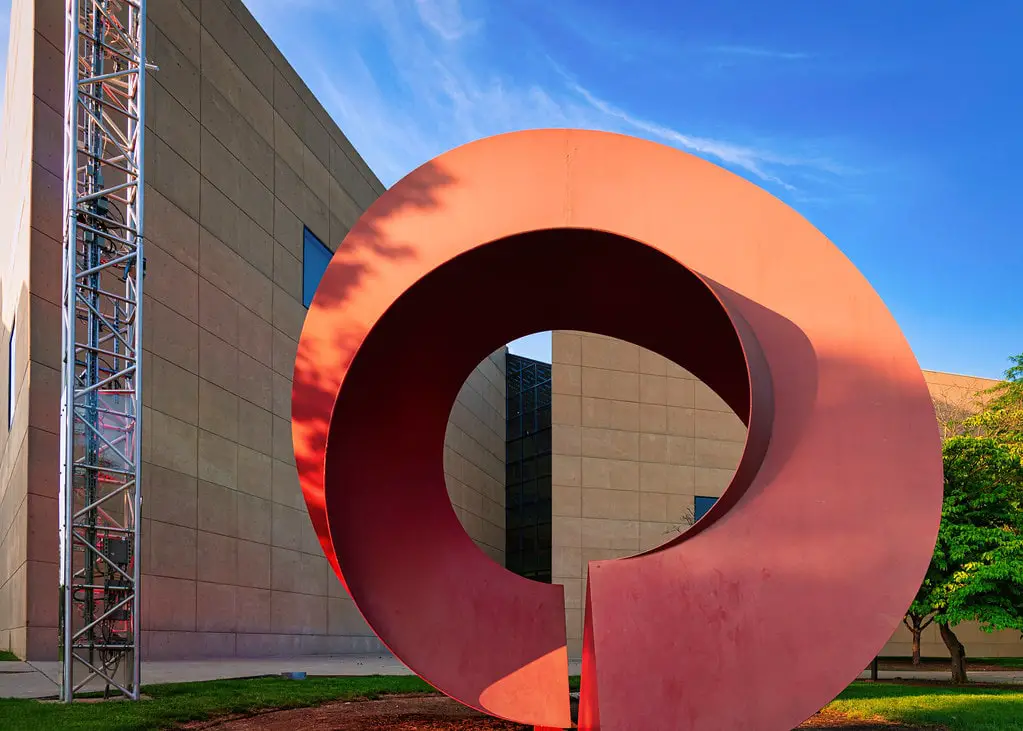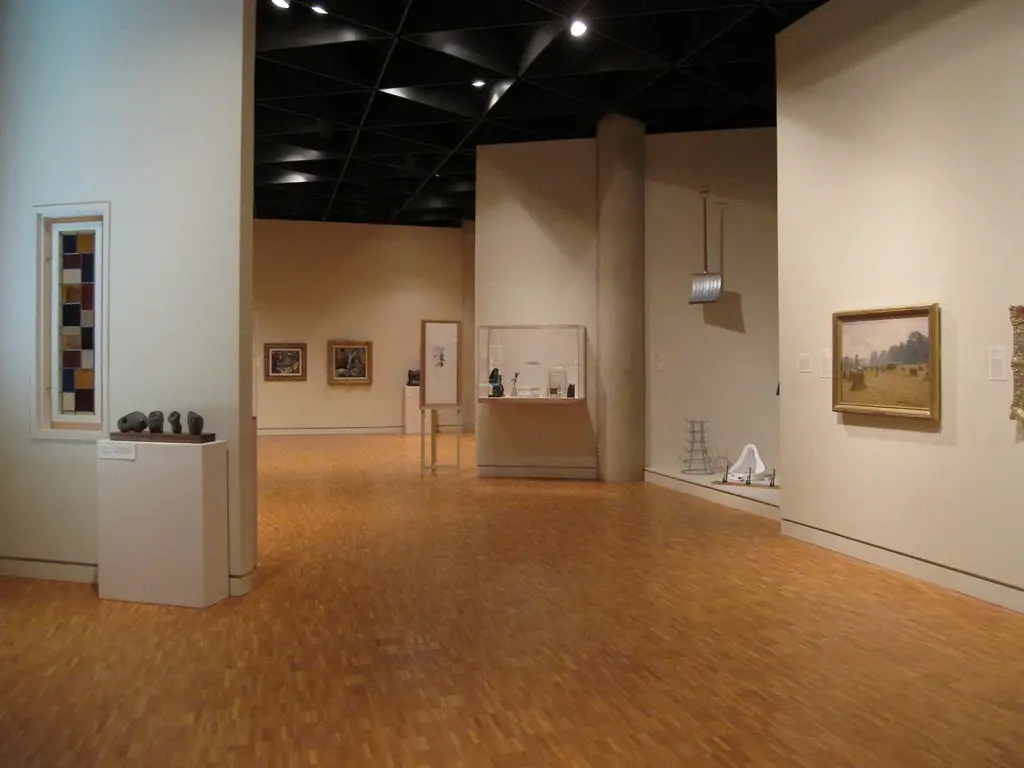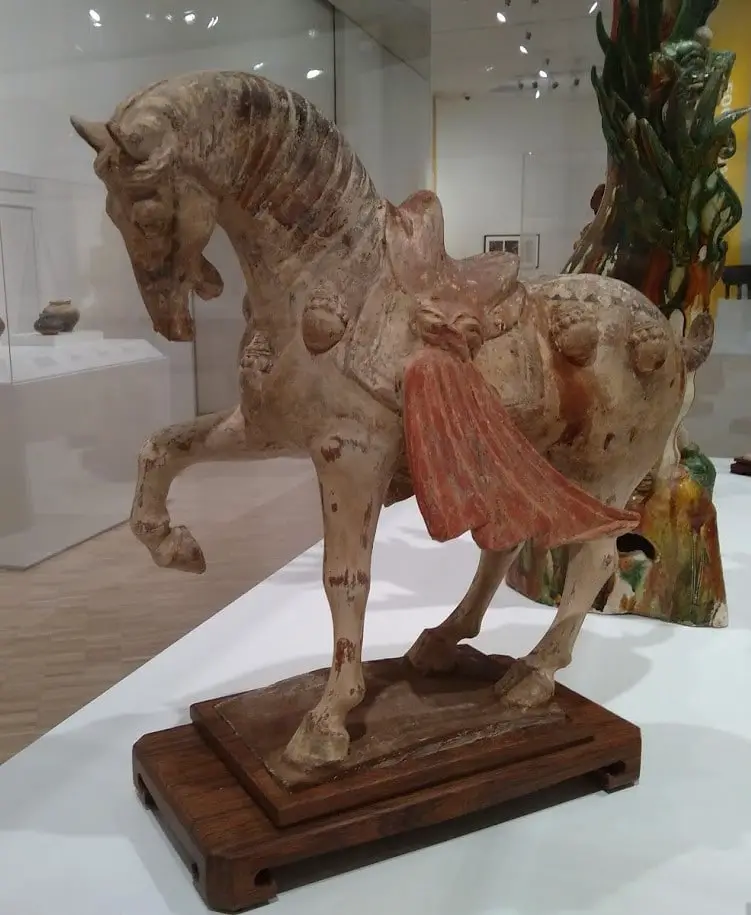Eskenazi Museum of Art: Historical Background
In the heart of Bloomington, Indiana, lies a treasure that began as a dream. In 1941, the then-president of Indiana University, Herman B Wells, along with Henry Radford Hope, who led IU’s art department, conceived the idea of an art collection that would traverse the entire world and include artifacts from every era of human civilization. Their ambition was not confined to mere walls; they sought to create a space to inspire and educate.
By the time 1962 rolled around, the vision of Wells and Hope had come to life in the form of the Fine Arts Building. This establishment allowed IU students and the general public to engage with the collection, broadening its reach and impact.
But as the collection grew in number and quality, it became clear that the university needed its dedicated art museum. The seeds were sown, and the aspiration for a unique structure began to take shape.
1982 marked a significant milestone as the modernist structure designed by acclaimed architect I.M. Pei opened its doors. This building was not just a space to conserve and showcase IU’s art collection; it was a masterpiece, standing as a testament to the university’s commitment to art and culture.
Architectural Marvel
The building that houses the Eskenazi Museum of Art is more than a container for art; it’s a work of art itself. The museum structure stands in line with his other remarkable 20th-century museum creations, such as the East Building of the National Gallery of Art in Washington, D.C., and the iconic glass pyramid at the entrance of the Louvre in Paris.
Its geometric form and sleek lines make it a landmark in Bloomington, attracting art enthusiasts and architecture buffs. The building’s design reflects a harmony between form and function, providing an inspiring space for visitors to explore art.
For those who have walked its halls and admired its design, the building is a reminder of the transformative power of architecture. It’s a space that makes one feel art, resonating with the creativity housed within its walls.
The Collection
The Eskenazi Museum’s collection is a rich tapestry of human creativity. With nearly 45,000 objects, it’s one of the most significant art holdings of any American university art museum. The treasures within its galleries represent almost every art-producing culture throughout history worldwide.
But the museum is not just about preserving art but teaching and learning. The museum has been a destination for over 160,000 K–12 students from the southern regions of Indiana. With the addition of four new learning centers as part of the building’s renovation, the museum has embarked on a thrilling new phase, solidifying its reputation as a top-tier teaching museum in the country.
The collection is a living testament to the power of art to connect, inspire, and educate. From ancient Greek pottery to contemporary cameraless photography, it offers a journey through time and human expression.

Leadership and Vision
The Eskenazi Museum of Art’s journey has been guided by visionary leaders who have each pioneered new chapters in its history. Henry Radford Hope, the head of IU’s art department and the museum’s first director, was instrumental in shaping its early years. His successor, Thomas T. Solley, significantly increased the museum’s holdings and led the transition to the I.M. Pei-designed structure.
Taking over the leadership in 1987, Adelheid “Heidi” Gealt played a pivotal role in shaping the educational and curatorial wings of the institution, thereby establishing a robust financial base. During her tenure, both the educational initiatives and the sustaining endowments of the museum saw remarkable growth.
USA Quiz
How many questions would you like?
The current director, David A. Brenneman, has led the museum through a $30 million renovation, enhancing visitor experiences. Since arriving in Bloomington in 2015, he has championed transformative partnerships and led the curatorial team to create a robust exhibition program.

Philanthropy and Renovation
The Eskenazi Museum of Art has thrived thanks to the generosity of individual donors and philanthropists. Most acquisitions have resulted from gifts of art or purchase funds from individual donors. In 2016, a significant contribution from Sidney and Lois Eskenazi helped fund a complete renovation of the museum, marking the beginning of an exciting new chapter.
This philanthropy has allowed the museum to grow and made art accessible. Central to the museum’s mission is the conviction that experiencing art in its authentic form enhances the cultural, educational, and spiritual dimensions of life.
The recent renovation has infused the museum with renewed vitality, transforming it into an interactive learning environment that demystifies the conservation process and delves into the innovative realm of art-centered wellness.

Current Exhibitions and Programs
The Eskenazi Museum of Art continues to be a vibrant hub of creativity and exploration. Current exhibitions like “Landscape and Abstraction in Watercolor,” “Looking at Form and Surface in African Ceramics,” and “Designing with Dyes” offer diverse perspectives and artistic expressions.
Educational programs, art therapy sessions, and public programming ensure that the museum is not just a place to view art but a space to engage with it. As an educational tool, the museum’s extensive collection facilitates in-depth, course-related experiences and fosters engagement with pre-K–12 students.
Recent news and events, such as the Marks and DePrez Photography Collection acquisition and the hiring of Jean Graves as the new Patricia and Joel Meier Chair of Education, reflect the museum’s ongoing commitment to growth and innovation.

Community Engagement and Future Directions
The Eskenazi Museum of Art is more than a building and a collection; it’s a community. Its commitment to diversity, accessibility, and inclusion ensures it remains a welcoming space for all.
Engagement with students, educators, and the wider community is at the heart of the museum’s mission. Initiatives like “A Space of Their Own,” a database focused on the work of women artists, reflect a dedication to broadening perspectives and celebrating diverse voices.
As the museum looks to the future, it continues to be a beacon of creativity, education, and inspiration. Its strategic mission to diversify its collection and its dedication to advancing art education ensures that it will remain a vital part of Bloomington’s cultural landscape for generations.

Conclusion
The Eskenazi Museum of Art stands as a symbol of Bloomington’s rich cultural heritage. Its history, architecture, expansive collection, and commitment to education and community engagement make it a unique and cherished institution.
For those who have wandered its galleries, admired its architecture, or been inspired by its exhibitions, the museum is a source of pride and inspiration. It’s a place that transcends time and space, connecting people with art and each other.
As the museum continues to evolve, it carries the legacy of its past and the promise of its future, enriching lives and nurturing a love for art that resonates far beyond its walls.

